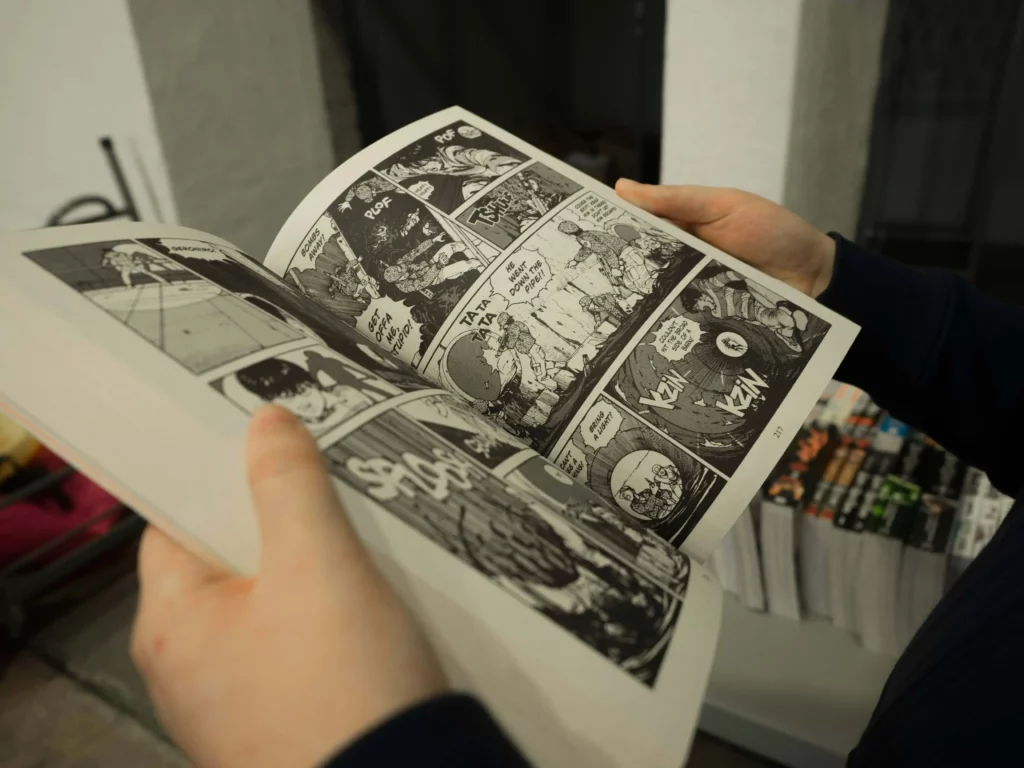Understanding graphic novels requires understanding their unique characteristics. What sets these visual narratives apart is their use of images and words to compose the story. Those who enjoy both literature and art are likely to find pleasure in engaging with these hybrid forms of storytelling.
Combination of Words and Images
One of the foundational features of graphic novels is the combination of words and images. This harmonious fusion allows authors to communicate layered stories, where both text and image carry narrative weight. Text elements, ranging from dialogues in speech bubbles to captions and text boxes, crystalize the emotions and thoughts of the characters.
Simultaneously, the images contextualize the narrative scenario and actions, revealing what words cannot convey.

Sequential Art Format
Graphic novels heavily rely on the sequential art format. In these visual narratives, stories progress from frame to frame, often divided by panels. This sequential format guides the reader’s eye in a certain direction, managing the pace of the story and facilitating narrative tension.
The arrangement of these panels and the actions they depict hold transformative power, turning static images into dynamic visual narratives.
Genre Diversity
Contrary to common belief, graphic novels aren’t confined to superhero stories, nor are they exclusively fictional works. They cover a broad array of genres, including but not limited to, memoirs, non-fiction, science fiction, fantasy and personal narratives. Therefore, genre diversity is another critical characteristic of graphic novels.

Color and Panel Use
Through the use of color and panels, graphic novels can amplify the emotional depth of the narrative and accentuate pacing. Some graphic novels utilize a more nuanced color palette, while others may stick to monochrome or splashes of bold colors. Similarly, panel layouts can range from traditional grids to more experimental design, each contributing differently to the overall storytelling ambiance.
Graphic novels vs. traditional novels and comic books
Some might mistake “graphic novel” as a glorified term for “comic books”, but they are distinct entities. The essential difference lies in their narrative structure; graphic novels possess a beginning, middle, and end, similar to traditional novels. They encompass complete stories, unlike periodical comic books that often contain serialized stories spanning multiple issues.

Influence of Cultural Context
One intriguing characteristic of graphic novels is the influence of cultural context. Authors often reflect their cultural backdrops in the narratives, making graphic novels bearers of differing storytelling aesthetics. For example, Japanese Manga and American graphic novels differ substantially in their visual and thematic styles.
Conclusions
Appreciating graphic novels involves acknowledging their unique storytelling methods that draw from both visual and textual elements. By doing so, we not only elevate this often misunderstood medium but also open ourselves to a wealth of diverse narratives that challenge traditional literature boundaries. Graphic novels are indeed more than just comic books; they are vibrant, layered, complex, and richly rewarding literature forms when recognized for their inherent qualities.
Related articles
- How Can You Write a Letter of Encouragement to a Missionary?
- Is ‘Begin Again’ a Good Book to Dive Into?
- What is Strunk and White’s Rule 13 in ‘Elements of Style’?
- What is the Engaging Plot of ‘Never Late, Never Away’?
- What Elements Make a Romance Novel Steamy?
- Unveiling Passion: The Best Steamy Romance Novel Quotes
- Exploring Best Valedictorian Speech Examples for Your Big Day
